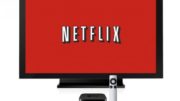Do you remember the first time you saw a DVR in action? Depending on your age, you might not. But for the greybeards in the audience, think back. All of a sudden you were freed from the constraints of time and space. Yes, VCRs could record content but they couldn’t pause live TV. They couldn’t let you zap through commercials on something that was currently airing. That seemed miraculous at the time.
I vowed that I’d never watch a commercial again. That may have been a little ambitious, since I do actually watch some things completely live. But I watch a lot fewer commercials than I ever did before and I think I’m a better person because of it. Unfortunately, my unwillingness to sit through commercials, and yours, broke the broadcast ecosystem for a whole generation.
The handshake deal of TV watching
The equation was always made clear to us. You’ll get about 45 minutes per hour of free entertainment, and we get to show 15 minutes of ads. We all accepted it because we had no choice. As soon as we could skip commercials though, we did. Everyone did. And it shook things up like never before. TV networks could no longer afford expensive prestige projects, because advertising rates couldn’t rise above 2006 levels. So, the kinds of shows people talked about moved to pay-TV channels. Some, like AMC, were also ad-supported. Others, like HBO, asked you to pay up front.
That worked for a few years, but then many of us moved to streaming. Streaming promised us what we said we wanted: pay one fair price and you get all your content commercial-free. Again, that worked for a while, but as streaming app prices went up and the number of apps grew, the equation stopped working again.
The inevitable creep of advertising back into our lives
Hulu was the first major app to include a commercial tier. Despite the fact that I claimed in 2009 that I would never pay for Hulu, I do and so do you. I pay for the commercial-free tier though. I suppose not everyone can afford that so I consider myself lucky.
Over the years more and more apps followed Hulu’s model. Peacock doubled down by making its ad-supported tier free, but including about as many commercials as you see on broadcast. Pluto created a whole new category of service by offering over 100 channels of live TV, all ad-supported, all free. And I’ll admit, even I saw this as a good thing, a way to hedge the increasingly untenable rise in streaming costs.
Of course the latest company to say they’re going ad-supported is Netflix, who is expected to introduce their commercial-laden tier later this year. Despite having arguably the worst value proposition of all streaming apps, they remain committed to making things worse. And this is where I realize it’s already all gone too far.
“the worst value proposition?”
That’s right, I said it. Netflix isn’t the most expensive app on the market. It’s one of them, though. It’s the only one of the major apps to charge more for 4K programming. If you want a plan that’s apples-to-apples with Hulu or Disney+, you’ll pay over $20 a month. Sure Netflix has this gigantic library of content but let’s call most of it what it is: uninteresting. Netflix has a lot of stuff that’s poorly made, appeals only to specialty markets, or just plain boring. In terms of what you want to watch, Netflix is a pretty bad value. And now, by adding commercials, they want to make it worse. I can’t imagine that an ad-supported tier is going to really help their bottom line.
Here’s how you really fix Netflix
Netflix says they lose more than half of their potential revenue because people share passwords. OK, there are ways to crack down on that. The fact that they have a bigger problem with password sharing than other apps tells me that there are things they could do right now. But the first thing to consider is that password sharing is always going to happen when your product is overpriced.
If you really want to fix Netflix, cut the price in half and make all the plans 4K-capable. If I were asked to pay $9 a month for Netflix in 4K, I would pay it. I wouldn’t bother with the issue of sharing passwords, which can be a pain in the neck for everyone.
Short term this would be tough for Netflix, that is true. But with some belt-tightening they could weather the storm. They should look at their development and acquisition budgets, and stop greenlighting poor quality stuff. At this point Netflix is perfectly capable of making good content, and perfectly capable of attracting and buying good content. Do those things, and stop doing everything else. Is that so hard?
Oh, and one more thing, Netflix. Don’t add commercials to the stuff people don’t want to watch anyway.





